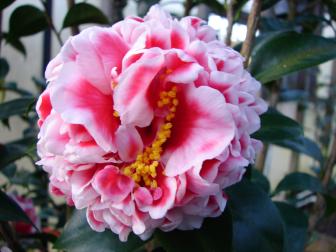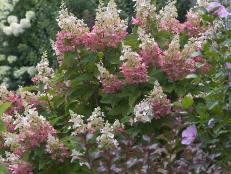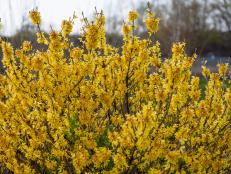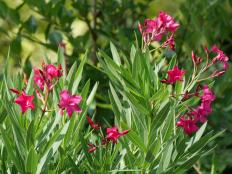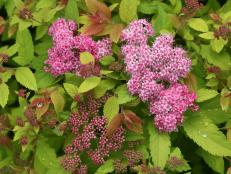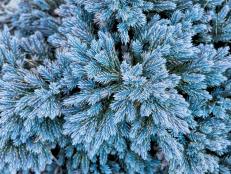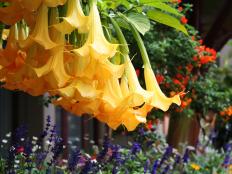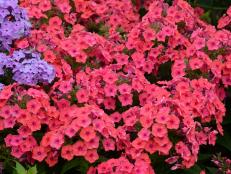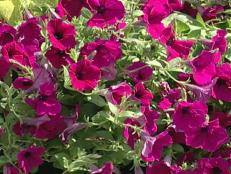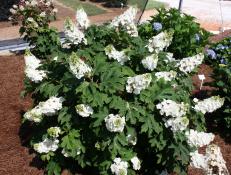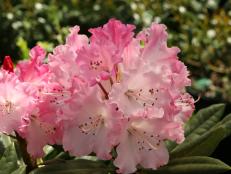Tips for Growing and Caring for Camellia Plants
Discover the beauty of camellias in your garden. HGTV has tips on caring for camellia plants and growing their stunning blooms.
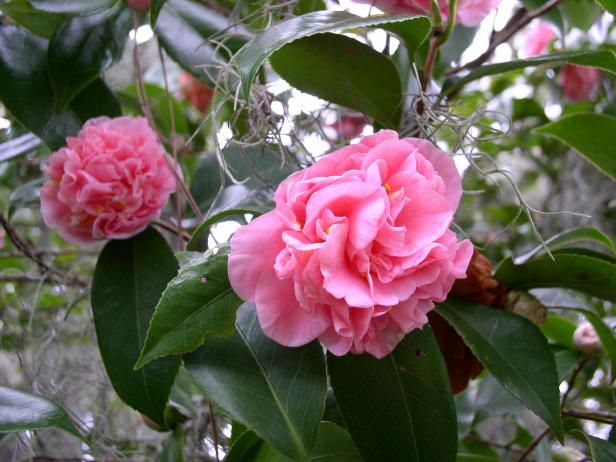
Image courtesy of American Camellia Society/Photo by Gene Phillips
Light pink Camellia japonica ‘Debutante’ is bushy and vigorous.

Captivating camellia plants (Camellia sinensis) thrive in temperate regions, and Southern gardeners have prized them for years. Now more cold-hardy varieties can grow farther north. Depending on the variety, these evergreen shrubs and small trees bloom in shades of white, red, pink and yellow from mid-fall or late fall into early spring.
Camellia sinensis is special, known as the queen of the winter garden and recognized as Alabama's state flower. There are about 250 species and 3,000 hybrid varieties, but Japanese camellias (C. japonica) and sasanquas (C. sasanqua) are the most popular. Others include C. reticulatsa (the tallest species); C. x williamsii; C. oleifera; and C. chrysantha. Some species can be used to make tea.
Botanical Name: Camellia spp.
Common Name: Camellia
Bloom Time: Late fall, winter, spring
Light Needs: Partial shade
Hardiness Zones: USDA 7-9; some to Zone 6
Height and Width: 2 to 12 feet high and 5 to 10 feet wide,
depending on variety
Growth Rate: Slow
How to Plant Camellias
Before you buy, make sure the camellia bush won't get too wide or tall for your space. In the fall or early spring, dig a hole as deep as the root ball and twice as wide. Backfill it, leaving the top 2 or 3 inches of the root ball exposed. Water thoroughly and add an inch of organic mulch 3 or 4 inches away from the trunk. Don't cover the top of the root ball.
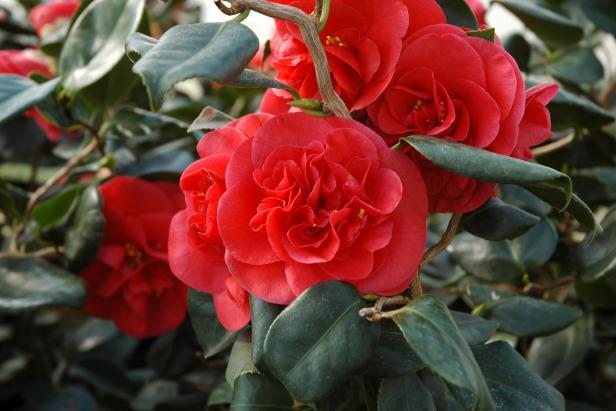
Ball Horticultural Compamy
Red Camellia japonicas like 'Curly Lady' add color to the winter and spring garden, when few other plants are in bloom.
Plant camellia shrubs and trees at least 5 feet apart. If necessary, transplant them when they're winter-dormant and young, while their root systems are still shallow and fibrous. Mature camellias form deeper roots.
How to Care for Camellias
Light Needs
Most japonicas prefer dappled or partial shade or a little morning sun with afternoon shade. Too much sun burns them. Sasanquas can tolerate full sun.
Soil
Give camellia bushes moist, rich, acidic soil that drains easily. Test your pH before planting to see if you need to add elemental sulfur to increase the acidity. Camellias can also thrive in large containers with good drainage. Use ericaceous compost, an acidic compost for plants that don't like alkaline soils (soils with lime).
Water
Keep camellia shrubs and trees consistently moist. They need about an inch of water per week, so water them if there's not enough rain or when you can stick your finger 2 or 3 inches deep into the soil and feel that it's dry. Soaker hoses and drip irrigation systems deliver water slowly, so it doesn't run off as it would with a hose.
Temperature
Even cold-hardy camellia bushes can be damaged in a freeze. If you have cold winters, mulch your plants to protect their roots and wrap them in burlap or horticultural fleece. Be sure some light can get through to the foliage and unwrap them when the temperatures rise.
Fertilizer
Feed camellias in early spring, late spring and early summer after the flowers finish. Use a slow-release fertilizer for acid-loving plants and follow the label directions. Stop fertilizing in August.
Types of Camellias
Choose camellias with staggered bloom times for a flower show from mid-fall to early spring. Japonicas bloom from late winter into early spring with flowers that last three or four weeks. Sasanquas bloom from late fall to early winter, have smaller flowers and take more sun than japonica. Some are fragrant.
Less common types include C. reticulata (the tallest species and the biggest flowers); C. hyemalis (a cross between japonicas and sasanquas); C. vernalis (an early flowering species with small blooms and yellow stamens). There are five flower forms: singles, semi-doubles, formal doubles or rose doubles (you can see the stamens when the flowers open), peony forms and anemone forms.
Pruning Camellias
Pruning camellias isn't always necessary, but you can control their size by cutting off the ends of branches as soon as the flowers finish. Give a dense camellia bush more light by cutting some interior stems back to the trunk. Also, prune camellas to remove dead or diseased wood. Cut just in front of a leaf so bare branch tips don't stick out.
How to Propagate Camellias
Cut a length of stem with leaves from your camellia bush just below a root node and put it in a glass of water, submerging the node. Give it bright, indirect light, and plant it when roots form. Or, strip the two bottom leaves from the cutting and insert it into one part potting soil mixed with one part perlite. Keep it moist and plant it after roots develop in two or three months.
To propagate by layering, make an angled nick in a stem that's long enough to bend down to the ground. Cover the nick with soil and pin down the stem with a rock. After roots form, cut the stem from the mother plant and plant the new camellia.
Common Camellia Problems
- Keep the ground around your camellia plants clean to discourage pests and diseases from moving in. If scale or aphids show up, try knocking them off with water from your hose, handpick them or spray with horticultural oil.
- Prevent root rot by giving camellia plants good drainage.
- Treat petal blight, a disease that makes blooms turn brown and drop, by removing infected flowers and spraying with a foliar fungicide.
- Prune branches with canker — a disease that causes sudden wilting and die-back — several inches below the infected area. A fungicide may also help.
- Remove leaves with leaf gall, a fungus that forms small galls underneath leaves and turns them brown. Spray with a fungicide.
- Camellia yellow mottle leaf virus eventually turns entire leaves yellow. There's no treatment, but avoid it by purchasing only healthy plants.
- Buds can drop when there's too much or too little water, not enough light or extremely cold weather. Mites and insufficient nutrients can also cause it. Adjust your gardening practices as needed.
How to Create a Beautiful Camellia Garden
Camellias provide winter interest, thanks to their evergreen leaves and flowers that appear when many other plants have stopped blooming. Grow them near hydrangeas to camouflage those plants when they're dormant and brown, or use them as hedges and screens.
15 Captivating Camellias 15 Photos
This romantic evergreen shrub and Southern favorite does well in partial shade. See some of our favorite varieties.
Camellias are good backdrops for other flowers, and you can add them under tall trees that offer dappled light. You can also grow them around foundations that get some shade. A single camellia plant makes a lovely specimen or focal point. Low-growing sasanquas with horizontal growth habits can be used as groundcovers.
Camellia Varieties to Grow
Use this sampling to find your favorite camellias and visit 15 Captivating Camellias for more ideas.
'Yuletide' — a winter-blooming, fragrant, red camellia with gold stamens. Hardy to Zone 7.
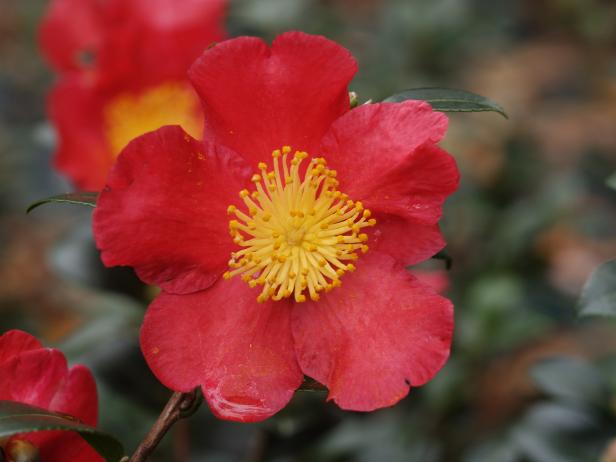
Image courtesy of American Camellia Society/Photo by Gene Phillips
'Yuletide' camellia
'Black Magic' — a dark red camellia japonica with holly-like foliage. Hardy to Zone 7.
'April Blush' — a japonica with shell-pink flowers that bloom winter to spring. Hardy to Zone 6a. Look for other cold-hardy camellias in the 'April' series.
'October Magic Ruby' — A fall-blooming, red camellia sasanqua with fully double flowers. Hardy to Zone 7.
'Pink Perplexion' — a fall blooming sasanqua named for the difficulty in describing the soft pink color of its double blooms. Hardy to Zone 7.
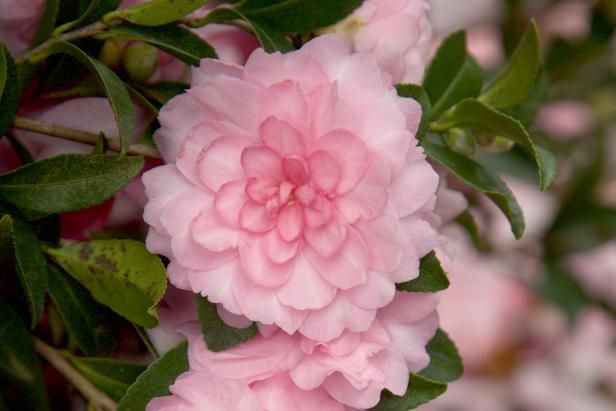
SouthernLivingPlants.com
'Pink Perplexion' camellia






